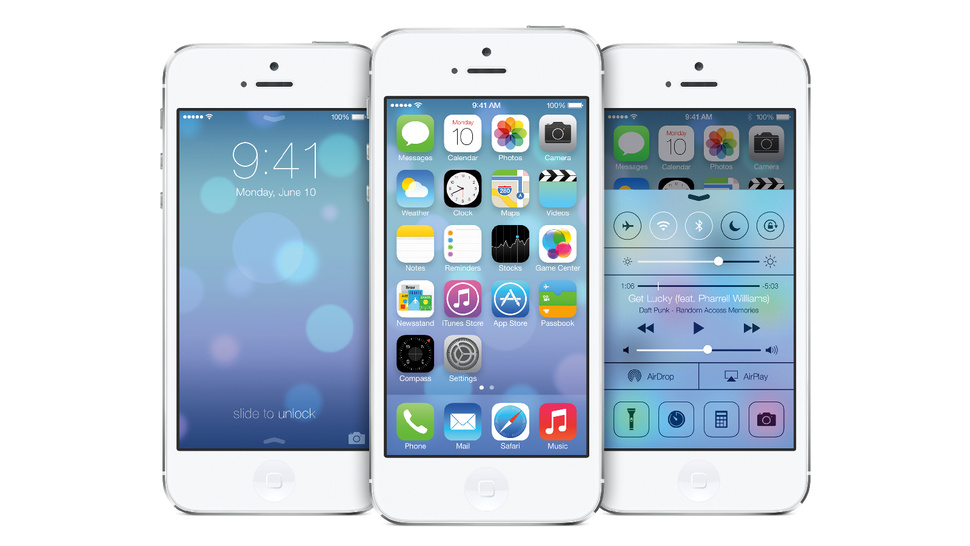Fanboi articles are generally tiresome, but I liked this one from Gizmodo. The two main points?
1. When a company runs out of real innovation, they start using frosted glass effects like MS did in Vista and Apple does in iOS 7.
2. The smartphone hardware market has matured to the point where the dominant concern is ease of access to information, where Google’s Android OS really shines over Apple’s closed ecosystem.
This goes back to the argument most people made (including me) when Android was first announced: that Android + ARM was going to be the new Windows + x86 ecosystem: bigger and messier than Apple’s walled garden. I think that Apple’s gate-keeping approach was absolutely pivotal to introduce the new technology, and Android still has serious problems to fix when it comes to piracy and disparate hardware (sound familiar?) but that the very first metaphor was probably right, and in the future we should expect to see Android take more market share (and also key sections like the enthusiast market) while Apple maintains a small (but possibly highly profitable) grip over a smaller slice of the user-base.
Me? My iPhone 4S still has at least a few good months of use in it, no problem. After that, I honestly couldn’t say if I’ll get another Apple, an Android, or even a Windows phone. I’m still completely undecided.

Android has really come a long way. I got a Nexus 4 earlier this year and I really do love it. I found it very intuitive.
Rottman (founder of Germany’s biggest app development company) had some thoughts along these lines earlier this year:
http://rottmann.net/2013/01/an-iphone-lovers-confession-i-switched-to-the-nexus-4-completely/
“This also is the area where I got most disappointed when Apple introduced iOS 6.
In fact, I think iOS has reached a point, where usability starts to significantly decrease due to the many workarounds that Apple has introduced. All of these just to prevent exposing a paradigm like a file system or allowing apps to securely talk to each others. There is a better way of doing this. Apples knows about it but simply keeps ignoring the issues.
On Android, it’s quite the opposite. One can see the most obvious example when it comes to handling all sorts of files and sharing.
Let’s assume, I receive an email with a PDF attachment which I’d like to use in some other apps and maybe post to a social network later.
On iOS, the user is forced to think around Apple’s constraints. There is no easy way to just detach the file from the email and subsequently use it in what ever way I want. Instead, all iOS apps that want to expose some sort of sharing feature, do have to completely take care for it themselves. The result is a fairly inconsistent, unsatisfying user experience.
On iOS, you might use the somewhat odd “Open in…” feature – in case the developer was so kind to implement it – to first move the file over to Dropbox, which gives you a virtual, cloud based file system. If you’re lucky, the other app, from which you want to use the file next, offers Dropbox integration, too, so you can re-download it and start from there. All because Apple denies the necessity of basic cross-app local storage.
On Android, it’s really simple.
I can detach the file to a local folder and further work with it from there. Leveraging every single app that handles PDF files. In case I receive a bunch of mp3 files, I can do the same. And every app, that somehow can handle audio playback, can reuse those mp3 files.
Another great example: Sharing stuff on social networks. On iOS, I have to rely on the developers again. Flipboard, as one of the better examples, gives me the ability to directly share with Google+, Twitter and Facebook. On my Nexus 4, I have 20+ options. That is, because every app I install can register as a sharing provider. It’s a core feature of the Android operating system.
But it goes even further: On Android, I can change the default handlers for specific file types – much like I’m used to from desktop operating systems.
If, for example, you’re not happy with the stock Photo Gallery application, that shows up whenever an app wants you to pick an image, you can simply install one from over a hundred alternatives and tell Android to use it as its new default. The next time, you post a photo with the Facebook app – or have to pick an image from within any other app – your favorite gallery picker shows up instead of Android’s own.
All of this is entirely impossible on iOS today. I’ve stopped counting how often I felt annoyed because I clicked a link to a location in Mobile Safari and would have loved the Google Maps app to launch. Instead, Apple’s own Maps app is hardcoded into the system. And there’s no way for me to change it.”